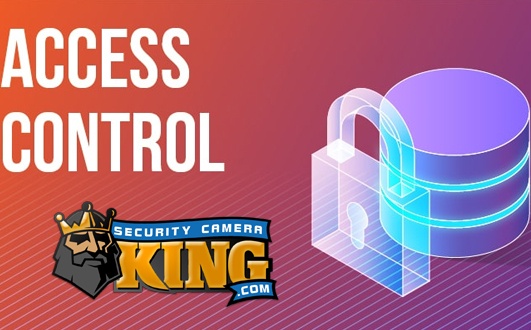What is security access control? Security Access Control is the regulation of access to facilities or controlled areas. A physical access control system (PSASC) is a group of security procedures, equipment, and guidelines for physically controlling access to secured areas and/ or personnel. Physical access control usually refers to physical barriers placed at strategic locations where personnel are unable to enter into a restricted area without proper authorization from someone in command of that area. A physical access control system also includes motion detection devices that prompt personnel to raise their hands or arms when they are in a restricted area, with the aim to allow restricted individuals to gain access to restricted areas.
There are two main types of physical security access control: manual and automatic. Manual security access control involves using the keys and access cards provided by the manufacturer to gain access to secured areas. These cards are usually printed with the appropriate information, such as “level of access authorized” or “passcode required”. Manual security control also requires one to pass through security clearance, usually a three-step process, in order to gain physical access into a facility. This requires personnel to be given special training for the task, which may also require them to take part in a formal training course.
Automatic physical access control is an automated process, which requires no special authorization for it to start. An example would be a security guard who works at a bank and is required to stand at a certain point within the bank’s premises before he is permitted to enter. The same thing happens with truck drivers who are required to pass through a security checkpoint, where a security officer scans their drivers’ licenses and checks if these are authorized. Based on the scanner, the officer issues the driver with a card containing a limited number of cardholders. The number of cardholders may increase or decrease depending on how many trucks are being loaded or unloaded.
The most common types of controllers are RFID based access controllers (such as those used in casinos), which require no special clearance procedures and are more robust than manual controls. Based on radio-frequency identification (RFID), they can identify and retrieve stored data and access the needed information at a later time. They are often installed near the point of entry, as they do not need any physical contact with the people inside. However, they can be controlled manually as well.
Another type of electronic access control is mechanical locks, which employ codes that are entered by personnel. Mechanical locks are suitable for temporary use. This makes them ideal for airports, shopping malls, and banks. The advantage here is that there is no need to physically verify the presence of authorized users. However, they are less secure than RFID-based access controllers because physical authentication is still possible using manual biometrics.
Sub-controllers make access decisions based on different criteria, usually according to the level of access. For instance, the highest level of access is known as the main access, which grants access to all other levels. However, there is still a chance that someone will bypass this and gain access to the lower levels, which means that sub-controllers will be necessary to make access decisions in situations where only main controllers can grant access. In some cases, when a sub-controller is not available, a backup sub-controller system is used.
Readers are also used for access control systems, although they are normally used for reader verification. Readers are also known as digital readers and they are used mainly for manual verification. They are capable of processing data from touchscreens or printers and they either use a smart card or a license card to accomplish the task. They are also capable of processing data from security cameras or video monitors, which means that they might be necessary to make access decisions when you do not have a digital access reader, for example, if you want to go through security without a license card.
Although sub-controllers and smart cards are very useful, they are unsuitable for some specific business applications because they involve too much manual work. For instance, a security camera or video monitor requires interaction from two people, whereas a reader only needs one person. Readers are also difficult to install since they usually need to be installed in a protected room, which limits their functionality. Finally, sub-controllers are not suitable for offices that are separated from other departments, because they will require interaction between the two departments for a smooth business operation.
Security Access Control
Call Security Camera King today if you have any questions about Security Access Control. 561-288-5258
Related: What’s the difference between DVR and NVR?
Related: What’s the difference between H264 and H265?
Related: IP PTZ Security Cameras – All There is to Know
Related: Resolution, and why does it matter?
Related: What are active deterrence cameras?
Find Us On: Facebook | Twitter | YouTube

